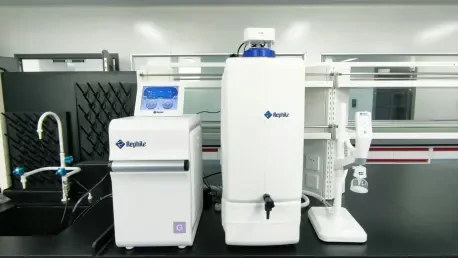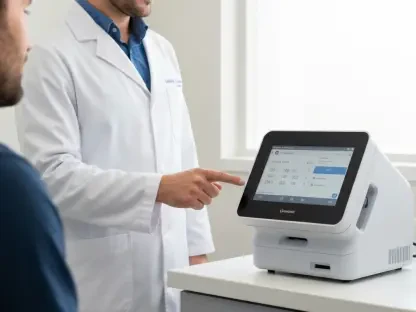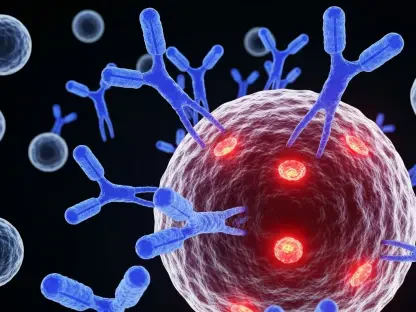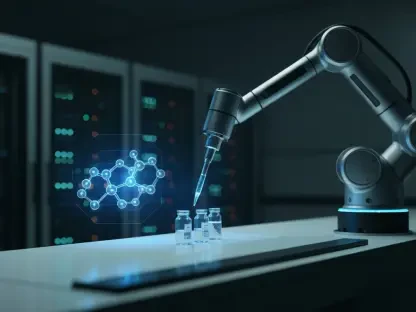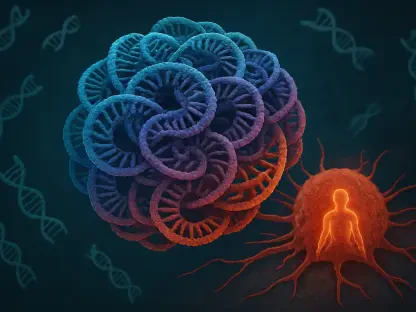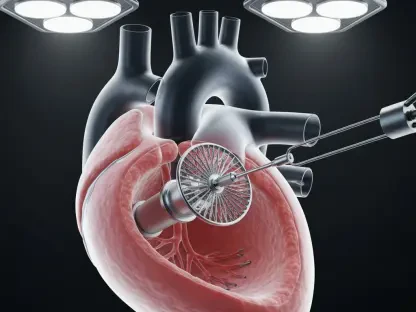3D printing technology is paving the way for significant advancements in the medical field, particularly within plastic and reconstructive surgery. The introduction of dynamic interface printing (DIP) promises to transform tissue engineering, making it possible to create patient-specific, biocompatible tissue replacements directly in the operating room. By addressing certain limitations of conventional 3D printing, such as speed, accuracy, and material suitability, this technology holds great potential for personalized medicine and improved surgical outcomes.
The Current Landscape of 3D Printing in Medicine
3D printing has already made strides across various industries, but its application in plastic and reconstructive surgery remains underexplored. For surgeons, the ambition to create customized tissue replacements like bone, cartilage, or even complex structures such as organs directly in the surgical setting is both immense and tantalizing. Traditional methods, including skin grafts and synthetic implants, are limited in their ability to replicate intricate biological compositions. Despite the promise and theoretical benefits of 3D printing, existing technologies struggle with producing biocompatible materials efficiently and accurately, hampering their integration into surgical practices.
A notable challenge in this field revolves around the inability to generate highly detailed and complex tissue structures quickly and reliably. The trade-off between operational speed and print resolution is a constant hurdle—high-resolution prints are incredibly time-consuming, while faster processes often sacrifice the intricacy necessary for successful medical applications. Additionally, the materials employed in 3D printing usually require thorough post-processing to meet stringent safety and biocompatibility standards. These inherent limitations have stunted the widespread adoption of 3D printing in surgical scenarios, obstructing its full potential in advancing medical practices.
Addressing Traditional 3D Printing Limitations
The primary setbacks faced by current 3D printing technologies in the medical sector pertain to speed, resolution, and material safety. High-resolution printing, vital for detailed tissue engineering, demands considerable time, making it impractical within a time-sensitive surgical environment. Conversely, processes designed for speed often fall short in delivering the necessary precision, ultimately limiting their applicability in creating complex and functional biological structures. The need for extensive post-processing to ensure material safety compounds these issues, adding more layers to the complexities of integration.
Efforts to mitigate these limitations have been ongoing, but the balance between operational efficiency and the meticulous requirements of medical applications remains elusive. Biocompatibility is another significant hurdle. The materials used in 3D printing must not only meet robust medical standards but also integrate seamlessly with human tissues, posing a considerable challenge. As a result, despite the considerable potential of 3D printing to revolutionize plastic and reconstructive surgery, these technological constraints have led to cautious and limited adoption in practical, real-world applications.
Dynamic Interface Printing (DIP): A Game Changer
In collaboration with the Collins Lab at the University of Melbourne, dynamic interface printing (DIP) has emerged as a promising breakthrough in bioprinting technology. Unlike traditional 3D printing methods, DIP leverages light-curing techniques to swiftly solidify photosensitive materials within a controlled, sterile environment, addressing some of the key limitations of speed and resolution. This technique involves projecting digital images through a hollow tube into a liquid bubble filled with resin or hydrogel. By utilizing light to solidify thin layers of material, the method allows for the rapid construction of highly detailed and complex 3D structures.
What distinguishes DIP from other methods is its ability to continuously update projections and move the print head vertically, enabling the creation of intricate designs within seconds. This advancement is critical for medical applications, where time and precision are paramount. The speed at which DIP operates ensures that the printed structures are not only accurate but also viable for immediate use in surgical procedures. The potential to revolutionize the way tissue engineering and reconstructive surgery are approached lies within this innovative method, promising a new era of customizable, rapid bioprinting.
Enhancing Bioprinting with Acoustic Vibrations
An innovative enhancement in DIP technology is the incorporation of acoustic vibrations to accelerate the material refill process between layers. Spearheaded by David Collins and his team of PhD students, this approach enables rapid formation of intricate structures with resolutions dictated by optical precision rather than mechanical constraints. By introducing acoustic vibrations, the process ensures continuous and swift movement of the liquid material, greatly reducing the time required for each layer to settle and solidify. This results in a printing resolution as fine as one micron, which is smaller than most cell structures, allowing for high-precision tissue engineering.
The ability to produce structures with such extraordinarily high resolution is a significant milestone, as it brings DIP technology closer to replicating the intricate details of human tissue. The fine control offered by acoustic vibrations not only enhances the overall speed and efficiency of the bioprinting process but also ensures that the final product adheres to the stringent standards required for medical use. This breakthrough potentially opens up new avenues in tissue engineering, addressing long-standing challenges and setting the stage for more sophisticated and functional organ and tissue replicas.
Achieving Functional Vascularization
One of the most critical challenges in tissue engineering is achieving functional vascularization within printed tissues. For any tissue thicker than one millimeter, nutrient diffusion becomes a significant issue, often leading to cell death in the absence of an adequate blood supply. Traditional bioprinting techniques have consistently fallen short in replicating the intricate network of capillaries needed to support functional tissue. The DIP method, with its remarkable combination of speed and precision, offers a way to overcome this hurdle by enabling the creation of detailed vascular networks essential for tissue survival and functionality.
Functional vascularization is crucial for replicating complex organs such as the liver and kidney, where the dense network of blood vessels is fundamental to the organ’s operation. The capability of DIP to print micro-vascular structures rapidly and effectively suggests significant progress toward creating transplantable tissues. By mimicking the natural vasculature of these organs, DIP technology holds promise for reducing the risks of tissue rejection and improving the overall functionality of transplanted materials, marking a crucial step forward in regenerative medicine and transplant surgery.
Demonstrating DIP’s Biocompatibility
Early demonstrations of DIP technology have shown significant promise in terms of biocompatibility, a fundamental requirement for any medical application. One notable example includes the creation of a kidney-shaped model embedded with live kidney cells. In controlled experiments, these cells maintained viability over several days, illustrating the potential for DIP-created tissues to function effectively within biological environments. This success underscores the practical applicability of DIP in creating viable tissue models, which can be an invaluable asset in both surgical procedures and broader medical research.
Beyond surgical applications, the biocompatibility of DIP-produced tissues opens new avenues in disease modeling and drug discovery. By providing realistic tissue models that closely mimic human biology, researchers can conduct more accurate preclinical testing of new drugs, potentially reducing reliance on animal models and expediting the development of new treatments. The ability of DIP printers to generate numerous tissue models swiftly enhances the prospects for personalized medicine, enabling tailored treatments based on patient-specific tissues and promoting more effective healthcare outcomes.
Economic and Institutional Implications
The successful implementation of DIP technology in clinical settings requires substantial investment and policy support from governmental and health institutions. Integrating DIP printers into hospital environments demands significant infrastructural changes, necessitating updated facilities equipped to accommodate this advanced technology. Moreover, establishing a robust regulatory framework that balances the stringent safety measures necessary for medical applications with the flexibility to innovate is critical. This balance ensures that new techniques can be efficiently trialed and deployed without compromising patient safety.
Widespread adoption of DIP technology is not solely a matter of technological feasibility but also hinges on creating the right economic and institutional landscape. Strategic investments in research and development, coupled with supportive policies, are essential to advance bioprinting from experimental stages to mainstream medical practices. Ensuring that healthcare providers are equipped to utilize this technology effectively requires targeted training programs and continuous collaboration between researchers, clinicians, and policymakers. By fostering a conducive environment for innovation, the healthcare industry can more readily embrace the transformative potential of DIP technology.
The Road Ahead: Bridging Research and Clinical Practice
Advancements in 3D printing technology are significantly impacting the medical field, especially in plastic and reconstructive surgery. The emergence of dynamic interface printing (DIP) is set to revolutionize tissue engineering. This innovative method allows for the creation of patient-specific, biocompatible tissue replacements directly in the operating room, tailored to individual needs. By addressing the limitations of traditional 3D printing, including issues related to speed, precision, and material suitability, DIP holds immense potential for enhancing personalized medicine. The technology promises to improve surgical outcomes by ensuring that tissue replacements are more accurately matched to the patient’s physiology. This significant leap forward not only enhances surgical efficiency but also offers a future where custom medical solutions are readily available, reducing recovery times and increasing the overall success of medical treatments. Ultimately, the integration of DIP into medical practices may mark a new era in which custom-designed tissues contribute to more effective and personalized healthcare solutions.
